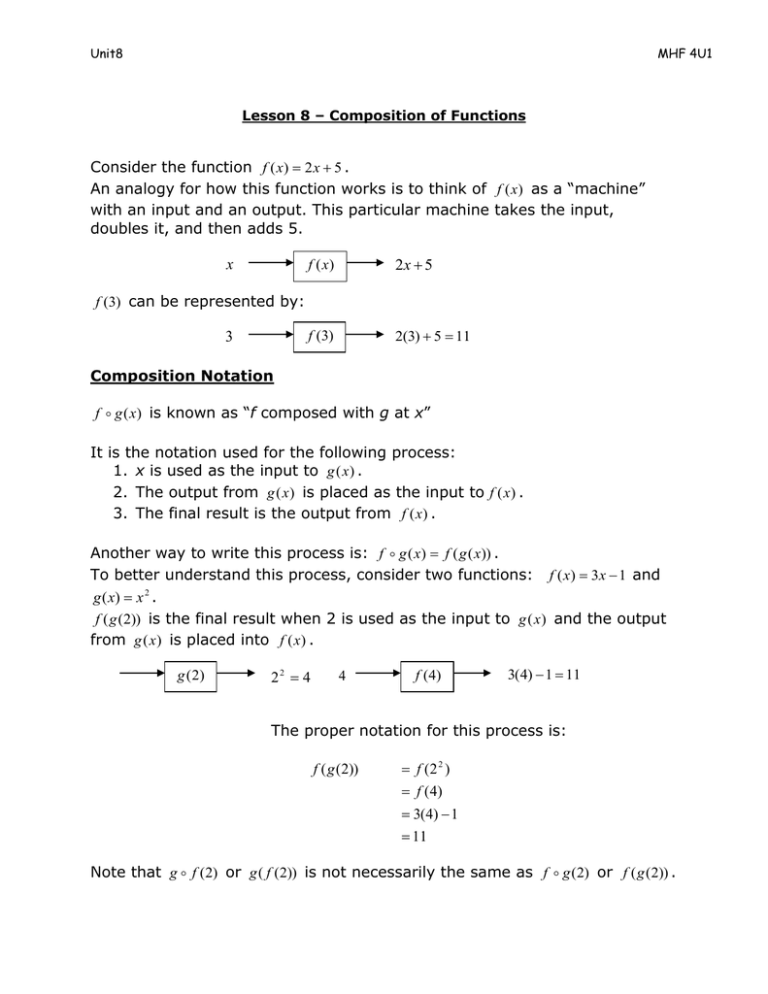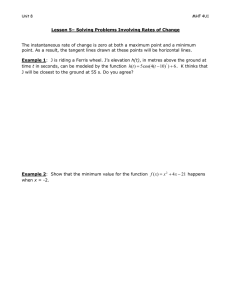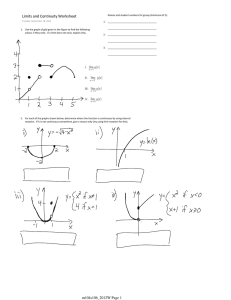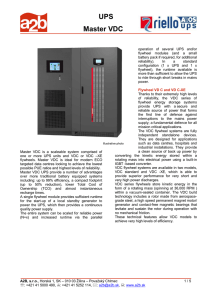Consider the function . as a “machine”
advertisement

Unit8 MHF 4U1 Lesson 8 – Composition of Functions Consider the function f ( x) 2 x 5 . An analogy for how this function works is to think of f (x) as a “machine” with an input and an output. This particular machine takes the input, doubles it, and then adds 5. x f (x ) 2x 5 f (3) 2(3) 5 11 f (3) can be represented by: 3 Composition Notation f g (x) is known as “f composed with g at x” It is the notation used for the following process: 1. x is used as the input to g (x ) . 2. The output from g (x ) is placed as the input to f (x) . 3. The final result is the output from f (x) . Another way to write this process is: f g ( x) f ( g ( x)) . To better understand this process, consider two functions: f ( x) 3x 1 and g ( x) x 2 . f (g (2)) is the final result when 2 is used as the input to g (x ) and the output from g (x ) is placed into f (x) . g ( 2) 22 4 4 f ( 4) 3(4) 1 11 The proper notation for this process is: f ( g (2)) f (2 2 ) f (4) 3(4) 1 11 Note that g f (2) or g ( f (2)) is not necessarily the same as f g (2) or f (g (2)) . Unit8 MHF 4U1 For g ( f (2)) , we have to use 2 as an input into f (x) first, and then place the result as an input into g (x ) . 2 f ( 2) 3(2) 1 5 5 g (5) 5 2 25 The proper notation for this process is: g ( f (2)) g (3(2) 1) g (5) 52 25 Example 1: Given that f ( x) 2 x 3 and g ( x) x , determine whether ( f g )( x) ( g f )( x)





